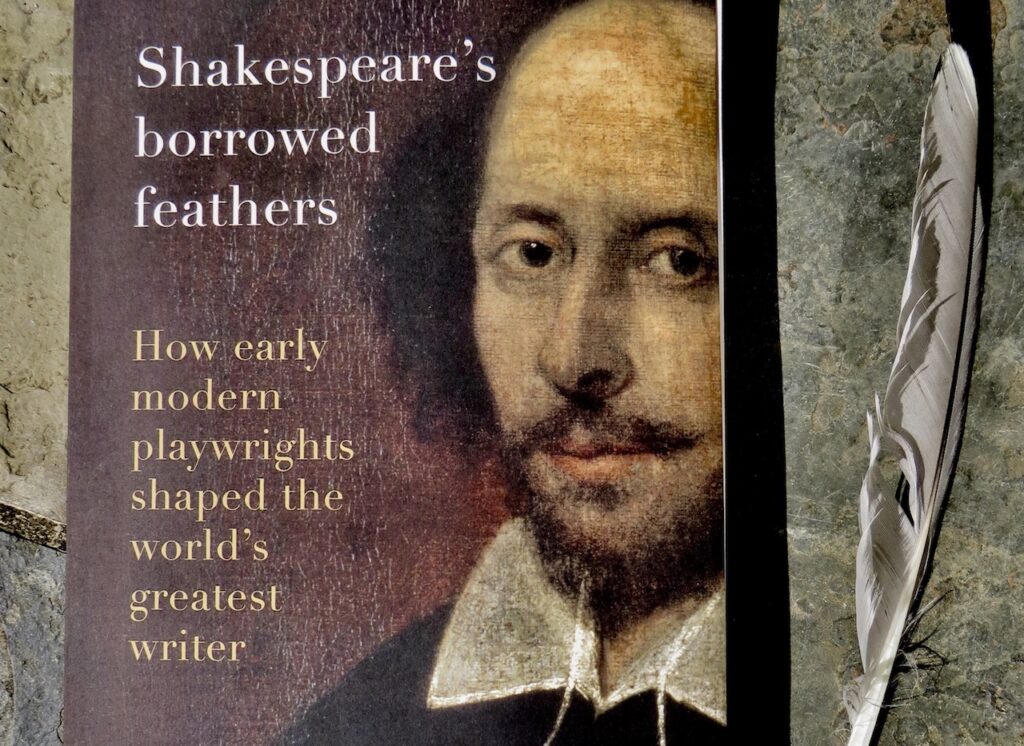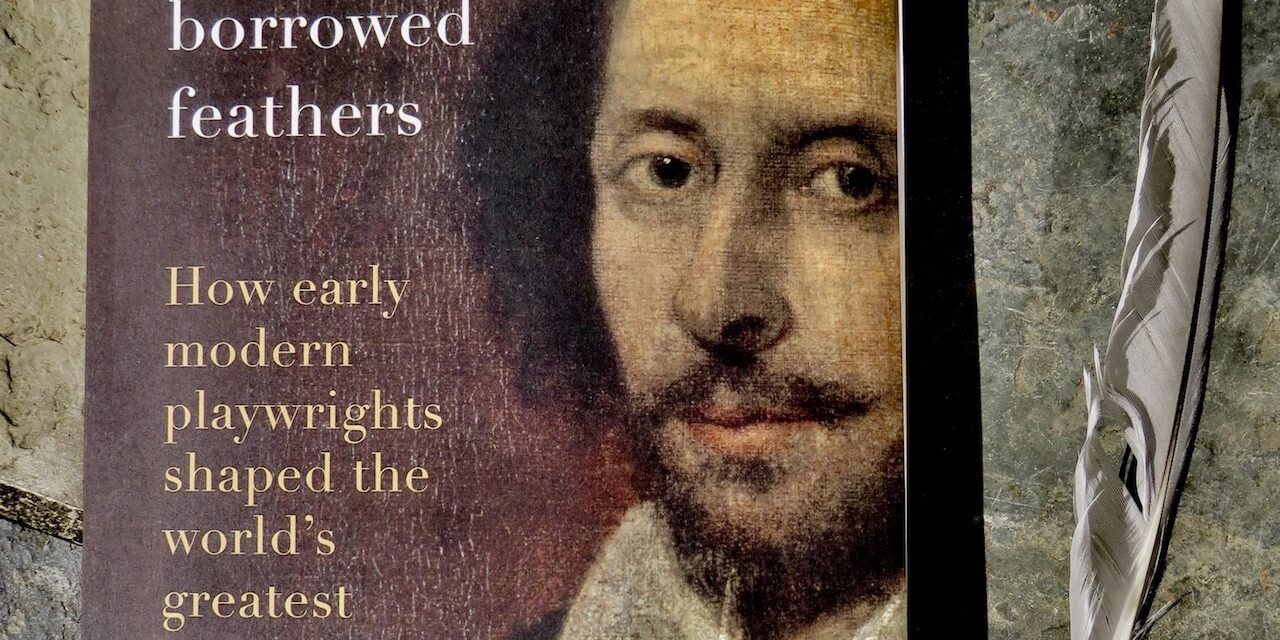
Shakespeare’s borrowed feathers by Darren Freebury-Jones
Manchester University Press 2024
Review by Andrew Hilton
There is a branch of Shakespeare scholarship termed Attribution Studies to which this book, to be published this autumn, is the latest addition. The theatre world of Shakespeare’s time was a small one and dramatists moved from one company to another, often collaborated, were employed by theatre managers to revise popular texts – their own or others’ – and often echoed each other in word and phrase.
It was frenetic, and could be contentious, rivalry sometimes surfacing in one writer creating a character to lampoon another on stage. And Freebury-Jones’ title is taken from what is generally regarded to be Robert Greene’s attack on Shakespeare – the ‘upstart crow, beautified with our feathers’ – which perhaps expressed the resentment of a university-educated playwright for the early success of a grammar school boy from Stratford.
Many of the plays of the period have survived, but over 700 titles have not. 18 of Shakespeare’s own – including Macbeth, Julius Caesar, As You Like It, Twelfth Night, Antony & Cleopatra and The Tempest – might have been included in that shocking number had not his loyal friends and associates, John Heminges and Henry Condell, collected his works in the great 1st Folio of 1623.
Freebury-Jones contends that part of Heminges’ and Condell’s intention was to lift Shakespeare’s talent and reputation above that of more ordinary mortals – the journeymen writers, the collaborators, the pens-for-hire. Whether or not this is true, the Folio has certainly contributed to that result. It has come to be regarded as a canonical text, entirely the work of the single, unprecedented genius that tradition has developed into myth.
Attribution Studies tell us otherwise; Shakespeare was influenced by predecessors and contemporaries throughout his career; he borrowed from them (King John was perhaps his most blatant act of plagiarism) and he worked collaboratively with several of them, notably George Peele (on Titus Andronicus); his probable neighbour in London, the brothel-owner and petty criminal George Wilkins (on Pericles); John Fletcher (on Henry VIII, The Two Noble Kinsmen and the lost Cardenio); and Thomas Middleton on (Timon of Athens). Middleton is also believed to have contributed the Hecate scenes from Macbeth, though not necessarily as a collaboration, but as a later addition after Shakespeare’s death. There are many other suspected areas of collaboration, addition or revision; for example, did Middleton have a hand in All’s Well That Ends Well and contribute the wonderful ‘fly’ scene, Act 3 Scene 2, to Titus Andronicus?
These questions are now addressed by complex data systems, in which preferred usages and habits of style are logged and compared across the acres of dramatic text that have survived. Freebury-Jones’ chosen system – there are others he judges far less reliable – is Pervez Rizvi’s Collocations and N-grams, a database of 527 plays dated between 1552 and 1657 which he terms ‘a revelation … It seems fair to say that [it] has raised the discipline to a new level’. It allows the researcher to trace words and phrases, even when broken or extended, that were shared between playwrights. By these means Rizvi creates tables of influence between plays.
The book is not always an easy read. Freebury-Jones has a frequent and irritating habit of completing a thought by quite unnecessarily quoting another academic in the field, as if he is a young student trying to prove the breadth of his reading and research, rather than the established authority he is. One breaks off, turns to find the reference in the collected notes at the end, only to wish Freebury-Jones had used his own words and not broken his flow in this way. And his use of Collocations and N-grams is exhaustively detailed; his ‘major intervention in our understanding of Shakespeare’s dramatic development’ – his own words – is not for the faint-hearted.
That said, he can write with great flair – indeed can be enjoyably flowery at times:
‘To read Macbeth is to sup full of horrors. But the chill that reaches from the page and traces readers’ spines like a yarn mallet on the bars of a xylophone can be hard to replicate in performance.’
– and his accounts of the lives and works of writers from Lyly and Marlowe to Middleton and Fletcher are engrossing and valuable. He is a passionate advocate of Thomas Kyd as perhaps the profoundest influence on Shakespeare in contradiction to the more common citing of Christopher Marlowe.
There are oddities: value judgements are few and far between, but one that caught my eye was this, of the Hecate scenes in Macbeth:
‘Her scenes afford creative opportunities for music, dance, pageantry, and dazzling spectacle, as seen in William Davenant’s brilliant 1664 adaptation which featured witches zipping about on broomsticks and Hecate riding a cloud.’
‘Brilliant’? I can hardly imagine anything more laughable, or more likely to make the reader’s experience of that greatest of all texts even harder to replicate in performance. And Middleton’s verse – if it is Middleton’s (not all academics agree on this, and as an ardent admirer of The Changeling I am loathe to believe it) – is little better than doggerel.
For serious students of the attribution debates, this book is a must. For the more general reader I would have to recommend in its place Stanley Wells’ far more reader-friendly Shakespeare & Co.
Andrew Hilton is the author of ‘Shakespeare on the Factory Floor’, Nick Hern Books 2022


